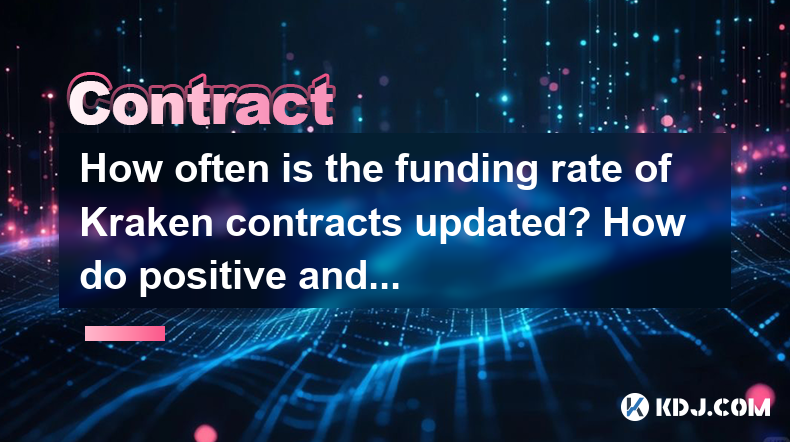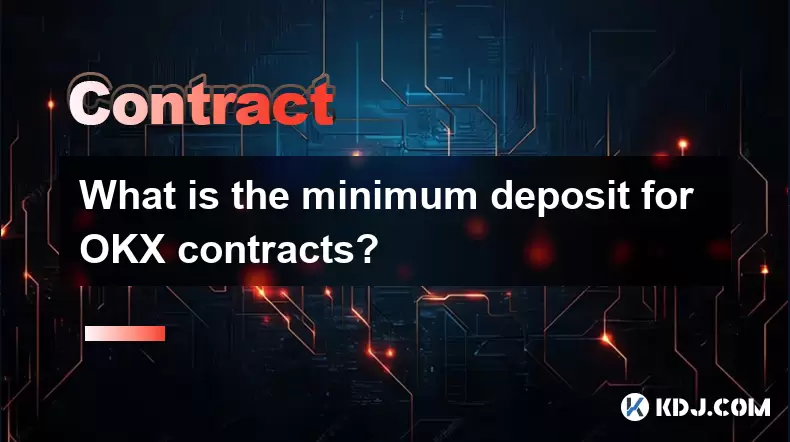-
 Bitcoin
Bitcoin $117600
2.11% -
 Ethereum
Ethereum $3907
6.13% -
 XRP
XRP $3.288
9.68% -
 Tether USDt
Tether USDt $1.000
-0.01% -
 BNB
BNB $784.8
2.00% -
 Solana
Solana $174.3
3.60% -
 USDC
USDC $0.9997
-0.03% -
 Dogecoin
Dogecoin $0.2220
8.04% -
 TRON
TRON $0.3379
0.01% -
 Cardano
Cardano $0.7829
5.46% -
 Stellar
Stellar $0.4348
8.84% -
 Hyperliquid
Hyperliquid $40.50
6.38% -
 Sui
Sui $3.757
7.22% -
 Chainlink
Chainlink $18.41
10.06% -
 Bitcoin Cash
Bitcoin Cash $581.6
1.91% -
 Hedera
Hedera $0.2586
5.37% -
 Avalanche
Avalanche $23.30
4.67% -
 Ethena USDe
Ethena USDe $1.001
0.01% -
 Litecoin
Litecoin $122.0
2.62% -
 UNUS SED LEO
UNUS SED LEO $8.972
-0.23% -
 Toncoin
Toncoin $3.338
1.14% -
 Shiba Inu
Shiba Inu $0.00001282
3.76% -
 Uniswap
Uniswap $10.38
6.88% -
 Polkadot
Polkadot $3.852
4.63% -
 Dai
Dai $1.000
0.02% -
 Bitget Token
Bitget Token $4.463
2.29% -
 Monero
Monero $263.6
-7.22% -
 Cronos
Cronos $0.1496
4.78% -
 Pepe
Pepe $0.00001106
4.91% -
 Aave
Aave $284.3
8.09%
How often is the funding rate of Kraken contracts updated? How do positive and negative rates affect returns?
Kraken updates funding rates for perpetual futures every 8 hours at 04:00, 12:00, and 20:00 UTC, impacting trading returns based on whether rates are positive or negative.
May 05, 2025 at 03:22 pm

The funding rate of Kraken contracts plays a crucial role in the dynamics of trading perpetual futures. Understanding how often these rates are updated and how they affect returns is essential for traders looking to maximize their strategies. In this article, we will delve into the specifics of Kraken's funding rate updates and explore the implications of positive and negative funding rates on trading returns.
Understanding Kraken's Funding Rate Updates
Kraken, one of the leading cryptocurrency exchanges, updates the funding rate for its perpetual futures contracts every eight hours. This frequency ensures that the funding rate remains aligned with the market conditions, reflecting the cost of holding a position over time. The updates occur at 04:00 UTC, 12:00 UTC, and 20:00 UTC daily. This schedule allows traders to anticipate and adjust their strategies based on the latest funding rate.
How Funding Rates Work on Kraken
Funding rates are a mechanism used in perpetual futures to ensure that the price of the futures contract remains closely aligned with the underlying asset's spot price. On Kraken, the funding rate is calculated based on the difference between the perpetual contract's market price and the spot price of the underlying asset. If the perpetual contract's price is higher than the spot price, the funding rate will be positive, and vice versa.
Impact of Positive Funding Rates on Returns
When the funding rate is positive, traders who hold long positions are required to pay funding to those holding short positions. This payment is designed to incentivize short positions, pushing the perpetual contract's price closer to the spot price. For traders holding long positions, a positive funding rate can erode their returns over time. For example, if a trader holds a long position in a perpetual futures contract with a positive funding rate of 0.01% per eight-hour period, they will need to pay 0.01% of their position's value every eight hours to short position holders.
On the other hand, traders holding short positions benefit from positive funding rates. They receive payments from long position holders, which can enhance their returns. For instance, if a trader holds a short position with the same funding rate of 0.01% per eight-hour period, they will receive 0.01% of the position's value every eight hours from long position holders.
Impact of Negative Funding Rates on Returns
Conversely, when the funding rate is negative, traders who hold short positions are required to pay funding to those holding long positions. This mechanism encourages long positions, pulling the perpetual contract's price closer to the spot price. For traders holding short positions, a negative funding rate can reduce their returns over time. For example, if a trader holds a short position in a perpetual futures contract with a negative funding rate of -0.01% per eight-hour period, they will need to pay 0.01% of their position's value every eight hours to long position holders.
Traders holding long positions, however, benefit from negative funding rates. They receive payments from short position holders, which can boost their returns. For instance, if a trader holds a long position with the same funding rate of -0.01% per eight-hour period, they will receive 0.01% of the position's value every eight hours from short position holders.
Strategies for Managing Funding Rates
Given the impact of funding rates on returns, traders need to develop strategies to manage these costs effectively. Here are some approaches traders can consider:
Monitoring Funding Rates: Traders should regularly check the funding rate updates at 04:00 UTC, 12:00 UTC, and 20:00 UTC to stay informed about the current rates. This information can help them decide whether to enter or exit positions based on the potential impact on their returns.
Position Sizing: Adjusting the size of positions can help manage the impact of funding rates. For example, if a trader anticipates a prolonged period of positive funding rates, they might reduce the size of their long positions to minimize the funding payments they need to make.
Hedging: Traders can use hedging strategies to offset the impact of funding rates. For instance, if a trader holds a long position in a perpetual futures contract with a positive funding rate, they might consider taking a short position in another correlated asset to balance out the funding costs.
Timing Entries and Exits: Timing entries and exits around funding rate updates can be beneficial. Traders might enter positions just after a funding rate update to avoid immediate funding payments or exits before a funding rate update to minimize the impact of the next funding period.
Practical Example of Funding Rate Impact
To illustrate the impact of funding rates on returns, let's consider a practical example. Suppose a trader holds a long position in a Bitcoin perpetual futures contract on Kraken with a notional value of $10,000. The funding rate is currently positive at 0.01% per eight-hour period.
- Funding Payment Calculation: The trader will need to pay 0.01% of $10,000 every eight hours, which amounts to $1 every eight hours.
- Daily Funding Payment: Over a 24-hour period, the trader will pay $3 in funding payments (3 x $1).
- Impact on Returns: If the trader holds the position for a week, the total funding payments will be $21 ($3 x 7 days). This amount will reduce the trader's overall returns from the position.
In contrast, if the funding rate were negative at -0.01% per eight-hour period, the trader would receive $1 every eight hours, totaling $21 over a week, which would enhance their returns.
Frequently Asked Questions
Q: Can funding rates on Kraken change between the scheduled updates?
A: No, the funding rates on Kraken are fixed for each eight-hour period and only change at the scheduled update times of 04:00 UTC, 12:00 UTC, and 20:00 UTC. Traders can rely on these fixed intervals to plan their strategies.
Q: How can I find the current funding rate on Kraken?
A: To find the current funding rate on Kraken, navigate to the perpetual futures trading page for the specific asset you are interested in. The funding rate will be displayed prominently on the trading interface, typically near the price chart or in the order book section.
Q: Are there any fees associated with funding payments on Kraken?
A: Kraken does not charge additional fees for funding payments. The funding payments are directly exchanged between long and short position holders based on the calculated funding rate.
Q: Can I avoid funding payments by closing my position before the funding rate update?
A: Yes, closing your position before the funding rate update can help you avoid the funding payment for that period. However, you will need to consider the potential impact on your trading strategy and the costs associated with re-entering the position after the update.
Disclaimer:info@kdj.com
The information provided is not trading advice. kdj.com does not assume any responsibility for any investments made based on the information provided in this article. Cryptocurrencies are highly volatile and it is highly recommended that you invest with caution after thorough research!
If you believe that the content used on this website infringes your copyright, please contact us immediately (info@kdj.com) and we will delete it promptly.
- EigenLayer, Restaking, and Ethereum: Navigating the Hype and the Hazards
- 2025-08-08 06:30:12
- Super Bowl 59: Jon Batiste to Jazz Up the National Anthem
- 2025-08-08 06:30:12
- Cold Wallet Crypto in 2025: The Future is Now, Ya'll
- 2025-08-08 05:10:13
- MAGACOIN, SOL, and ADA: A Tale of Shifting Tides in Crypto
- 2025-08-08 05:10:13
- SHIB Price, PEPE, and the Memecoin Supercycle: Who Will Reign Supreme?
- 2025-08-08 05:50:12
- Pudgy Penguins Price Prediction: Google Trends & Breakout Signals
- 2025-08-08 05:50:12
Related knowledge

What is the minimum deposit for OKX contracts?
Aug 08,2025 at 07:00am
Understanding OKX Contract Trading BasicsOKX is one of the leading cryptocurrency derivatives exchanges, offering a wide range of perpetual and future...

Are there any fees for futures settlement on OKX?
Aug 08,2025 at 05:35am
Understanding Futures Settlement on OKXFutures settlement on OKX refers to the process by which open futures contracts are automatically closed or mar...

How to use the OKX margin calculator for futures?
Aug 08,2025 at 05:15am
Understanding the OKX Margin Calculator for FuturesThe OKX margin calculator is a specialized tool designed to assist traders in estimating the requir...

How to find and copy experienced traders on Bybit contracts?
Aug 08,2025 at 06:00am
Understanding Copy Trading on BybitBybit offers a copy trading feature that allows users to automatically replicate the contract positions of experien...

What are the API rate limits for automated trading on Bybit contracts?
Aug 08,2025 at 06:08am
Understanding API Rate Limits on BybitWhen engaging in automated trading on Bybit contracts, understanding the API rate limits is essential to prevent...

How do I use the Kraken Pro interface for contract trading?
Aug 08,2025 at 05:00am
Understanding the Kraken Pro Interface for Contract TradingThe Kraken Pro platform is designed for advanced traders who require speed, precision, and ...

What is the minimum deposit for OKX contracts?
Aug 08,2025 at 07:00am
Understanding OKX Contract Trading BasicsOKX is one of the leading cryptocurrency derivatives exchanges, offering a wide range of perpetual and future...

Are there any fees for futures settlement on OKX?
Aug 08,2025 at 05:35am
Understanding Futures Settlement on OKXFutures settlement on OKX refers to the process by which open futures contracts are automatically closed or mar...

How to use the OKX margin calculator for futures?
Aug 08,2025 at 05:15am
Understanding the OKX Margin Calculator for FuturesThe OKX margin calculator is a specialized tool designed to assist traders in estimating the requir...

How to find and copy experienced traders on Bybit contracts?
Aug 08,2025 at 06:00am
Understanding Copy Trading on BybitBybit offers a copy trading feature that allows users to automatically replicate the contract positions of experien...

What are the API rate limits for automated trading on Bybit contracts?
Aug 08,2025 at 06:08am
Understanding API Rate Limits on BybitWhen engaging in automated trading on Bybit contracts, understanding the API rate limits is essential to prevent...

How do I use the Kraken Pro interface for contract trading?
Aug 08,2025 at 05:00am
Understanding the Kraken Pro Interface for Contract TradingThe Kraken Pro platform is designed for advanced traders who require speed, precision, and ...
See all articles

























































































